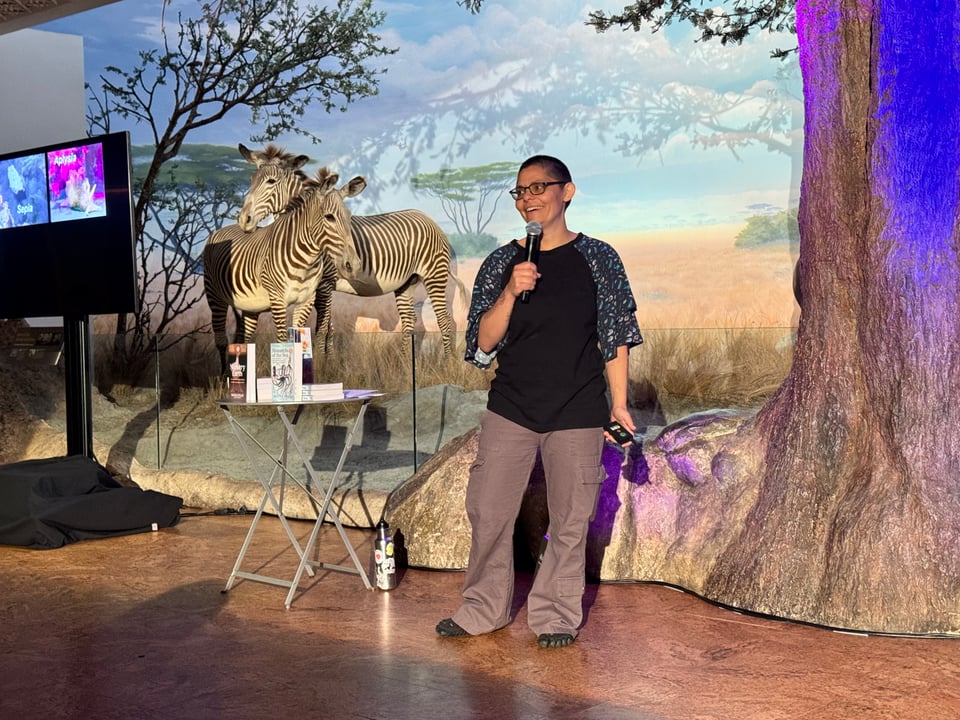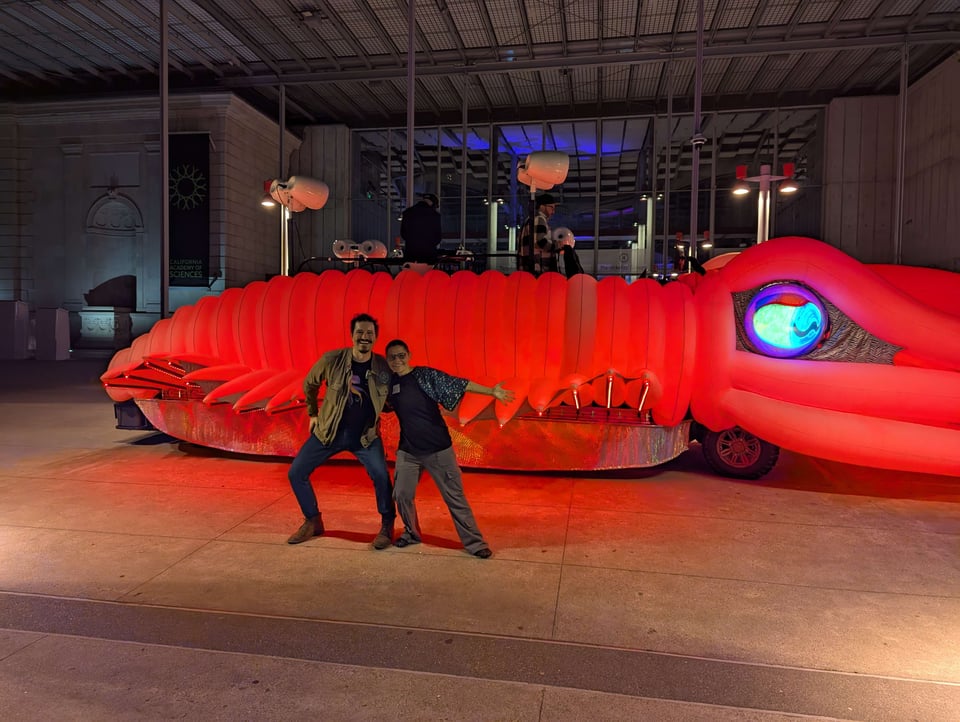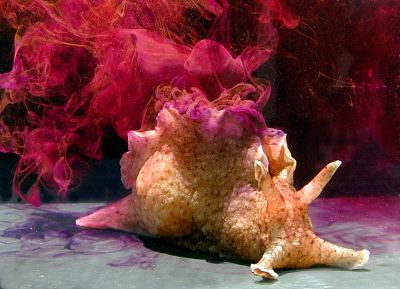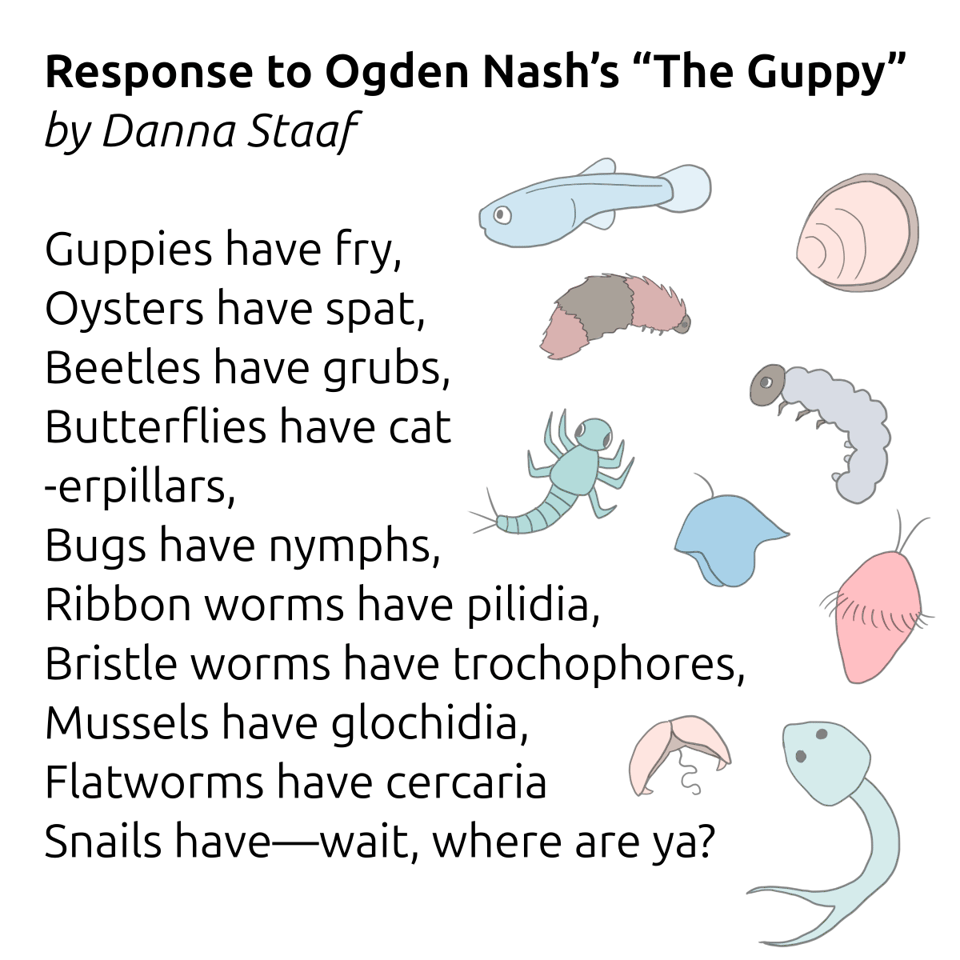The OctoPost: Octo-Boom & Slug Ink
Cephalopod News
In the Animal Adaptation Olympics (which I’ve just made up), cephalopods walk off with the gold in camouflage. Every. Single. Time.
But in regeneration . . . well, even though they’ve been training for millions of years, cephs struggle to place against competitors like axolotls, sea stars, and flatworms.
That is, until they find a champion, like the octopus who grew back six arms after losing five, for a total of nine arms. Two of the new arms sprouted from a single stump and went through an incredible developmental journey, first remaining cautiously close to the body and eventually taking greater risks.
It’s no 96-armed octopus, but it deserves a bronze, at least.
How about adaptations to climate change? Well, those depend on the species and the situation. Right now, common octopuses in England are having a ball as warm waters welcome them into an area where humans thoughtfully collect some of their favorite food:
[Octopus] numbers have begun to run riot of the local crab and lobster fishing industry, predating on catch by – oftentimes – sneaking into crab and lobster pots to devour the catch before sneaking back out again.
It’s almost as if we’re subconsciously trying to appease our new cephalopod overlords.
(As a linguistic aside, I must admit that I can’t stand “predate on” used in place of “prey on.” We already had a perfectly good prepositional verb, people! There was no need for a back-formation from “predator.”)
My News

For the third year I was privileged to join the California Academy of Sciences’ Nightlife: Inked! I had a blast meeting friends old and new, geeking out about ink with cartoonist Sam Santos Julian for a fabulous audience, and having my mind (+eardrums) blown by the art car Sepia Lux.
You know it’s a great car if it has a name; I learned that from Chitty-Chitty-Bang-Bang.

My talk was called “Cephalopods: Nature’s Ink Guns,” but in the interests of fair play I also introduced two other ink-making animals: pygmy sperm whales and sea hares. Pygmy sperm whale ink looks like (and contains) poop, but sea hare ink is a stunning red-violet color.

Given that the cuttlefish-ink color “sepia” is named after the cuttlefish’s scientific name, I proposed that we name this gorgeous shade “aplysia” (uh-PLEASE-ee-uh) after the sea hare’s scientific name. The NightLife audience was on board, and if all my newsletter readers join us, we could really get a movement going.
Funny Pages
A few weeks ago, one of my friends shared this poem:
The Guppy
by Ogden NashWhales have calves,
Cats have kittens,
Bears have cubs,
Bats have bittens,
Swans have cygnets,
Seals have puppies,
But guppies just have little guppies.
It’s an utter delight, but biologically inaccurate. So I penned and illustrated a response.

(More information about all these offspring can be found, of course, in Nursery Earth.)
Add a comment: